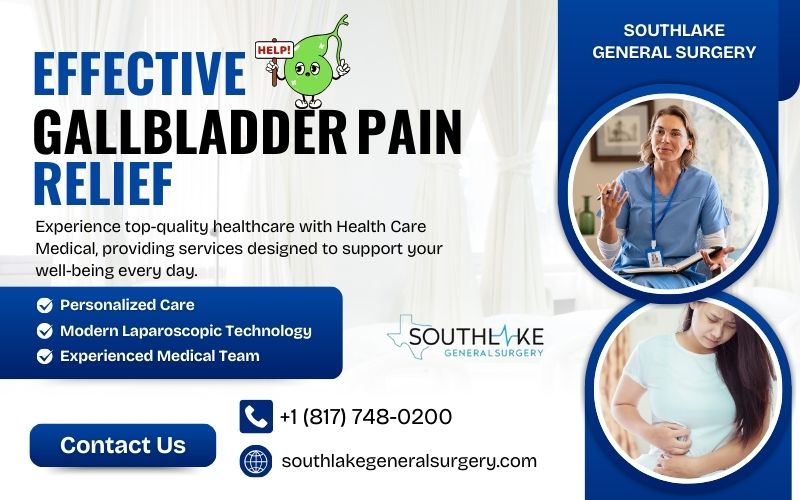Gallbladder pain relief is important for those with gallstones or inflammation. This pain can make it difficult to digest food and to do everyday tasks. The gallbladder is situated in the upper right part of the abdomen and plays a role in the digestion of fats from food.
When issues arise, proper treatment is needed. You can find relief by changing your diet or possibly having surgery. By understanding the symptoms and treatment options, you can feel better and take care of your health.
Key Highlights
- The most common causes of gallbladder pain are gallstones and inflammation. In certain cases, it may cause pain in the upper right abdomen.
- To feel better, you should try changing your diet. Stay away from high-fat foods, and include calming foods like apple cider vinegar and milk thistle.
- For quick relief from gallbladder pain, you can take over-the-counter pain medications. If you experience long-term gallbladder problems, laparoscopic surgery is a common choice.
- Engaging in physical activity and using home remedies like warm compresses can help keep your gallbladder healthy.
- Dr. Valeria Simone, MD, emphasizes tailored treatment strategies. She assists patients in enhancing their well-being following their treatment.
Understanding Gallbladder Pain
Gallbladder pain is typically felt in the upper right section of the abdomen. This discomfort typically arises from gallstones or gallbladder disease. Inflammation or blockage can send out signals. Sometimes, these signals may be confused with other issues.
At first, mild pain might seem unimportant. However, the situation could deteriorate, indicating that a visit to a medical professional may be necessary.
Understanding the reasons and signs of gallbladder pain can help you decide if you need to change your lifestyle or seek medical help quickly. Let’s look at what gallbladder pain is and what causes it to better understand.
What is gallbladder pain and why does it occur?
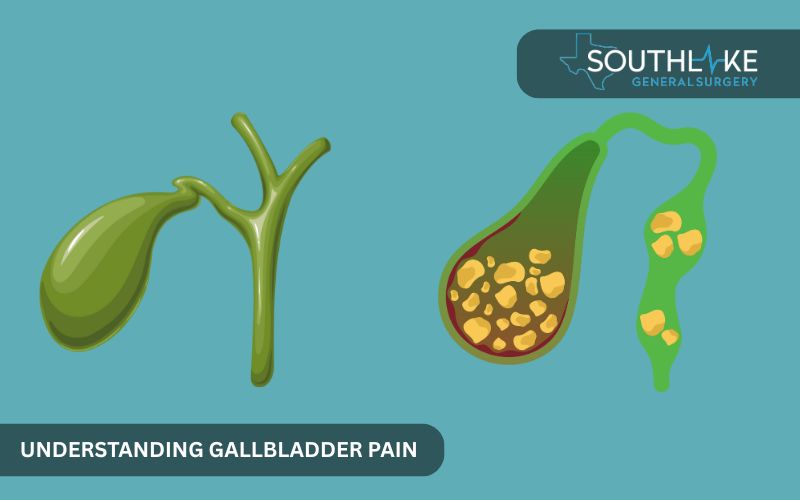
Gallbladder pain occurs when this tiny organ becomes swollen or when its bile ducts get blocked. The gallbladder has a job of storing bile, which helps to break down fats in the small intestine. If gallstones or issues with the bile ducts stop this process, it can cause inflammation and pain.
Gallbladder pain can occur for several reasons. The main cause is gallstones. These are solid formations composed of cholesterol or calcium salts. They can block the bile ducts.
This obstruction can generate pressure, result in infections, and cause swelling. There are some rare causes too. These encompass biliary dyskinesia, which influences the movement of bile, or autoimmune-related cholangitis.
The swelling of the gallbladder is called cholecystitis. This frequently happens when gallstones obstruct the ducts. Knowing the causes of gallbladder pain is very important.
If not addressed, it may result in considerable complications. By recognizing the signs, you can get help quickly to improve your digestive health.
Common symptoms associated with gallbladder discomfort
Symptoms of gallbladder discomfort include:
- You might feel abdominal pain that stays, even if you try to rest or change what you eat.
- There may be severe pain in the right abdominal area, just under your ribs. This pain can move to your mid-back or your right shoulder blade, making it tough to deal with.
- Nausea and vomiting often happen with these symptoms.
- If gallstones block bile for a long time, you could see jaundice. This means your eyes and skin may turn yellow. It can also darken your urine and cause lighter stools.
- Someone with gallbladder disease might feel a fever or chills, which may mean there is an infection.
It is important to watch for signs like sharp abdominal pain or constant discomfort. These symptoms may intensify following the consumption of fatty meals.
If you notice these signs, getting medical help right away can help stop problems like gallbladder attacks or infections in the bile duct.
Dietary Adjustments for Gallbladder Pain Relief Management
A good diet is very important for managing gallbladder pain and keeping your digestive system healthy. Eating bad foods that are high in saturated fats and sugars can make gallbladder problems worse. A diet that is low in fat and high in fiber helps bile flow better and can reduce inflammation.
Certain foods can soothe the gallbladder and ease pain. Foods like apple cider vinegar and milk thistle are helpful. It is important to avoid food that cause discomfort.
Instead, choose options that are good for the gallbladder. Here are some dietary choices that may reduce gallbladder pain and boost overall health.
Foods to avoid to reduce gallbladder pain
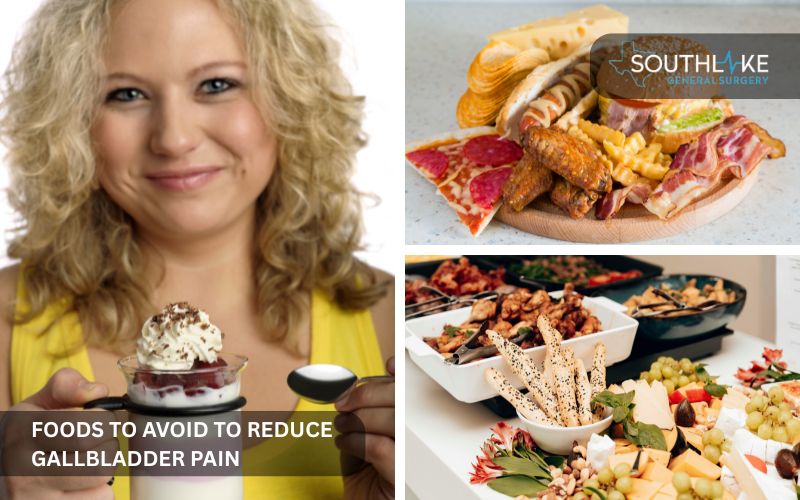
Unhealthy food choices can make gallbladder pain worse. They create more pressure on your bile system and may lead to inflammation. Staying away from certain foods can help you feel better.
- Fried and high-fat foods: These include things like fried meats and cheeses. They can be tough for your body to digest and can put pressure on your gallbladder.
- Processed foods: Foods that have trans fats, like chips, can hurt your digestive system.
- Sugary desserts: Treats such as cakes, ice cream, and pastries can raise cholesterol levels. This might lead to gallstones.
- Carbonated beverages: Drinks like sodas and sparkling drinks can cause more stomach pain.
By eating less fat and staying away from foods that hurt, you can help your gallbladder work well and get you relief from gallbladder pain. Eating fewer fatty foods allows bile to flow without adding more abdominal pain. Watching what you eat is a good first step to feeling better with digestive issues.
Recommended foods that soothe the gallbladder
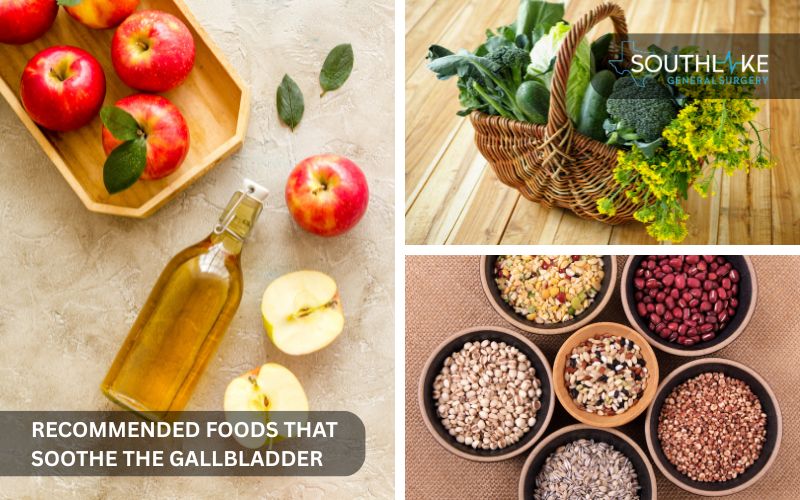
Certain foods may assist in preventing gallbladder attacks and alleviating gallbladder pain. Consider incorporating these into your diet:
- Apple cider vinegar: It can help lower inflammation and support digestion.
- Milk thistle: This herb supports the liver and gallbladder by cleaning bile.
- Dark, leafy greens: Spinach and kale are full of antioxidants that keep the gallbladder healthy.
- Whole grains: Brown rice contains soluble fiber, which can reduce bile cholesterol levels.
- Low-fat dairy: Low-fat milk and yogurt assist in lowering your fat consumption.
These foods are beneficial for your health and gentle on your digestive system. They can help give you relief from gallbladder pain and not put extra stress on the bile ducts. Eating these foods can also improve your digestion and decrease the chances of inflammation and gallstone problems.
Medical Treatments Available for Gallbladder Relief
If your gallbladder pain keeps going on, even after you change your lifestyle, it’s time to see a doctor. In case you’re experiencing mild to severe pain, you might find relief with over-the-counter medication. But for more serious pain, you may need prescription medicine or antibiotics.
Advanced gallbladder disease may need surgery for removal. Laparoscopic surgery is often the best option. It has fewer risks and helps you heal faster.
Understanding your treatment options is important for taking good care of your gallbladder. You can think about using medication or getting surgery for your health.
Over-the-counter medications for immediate relief
For sudden gallbladder pain, you can take over-the-counter medicine. Medications like ibuprofen and acetaminophen are non-steroidal anti-inflammatory drugs (NSAIDs). They can help reduce swelling and give you quick relief from gallbladder pain.
These medicines can help relieve mild gallbladder attacks or pain. Adjusting to your diet could be beneficial for your overall well-being. Be cautious if you use them for a long time. This can lead to dependence or side effects. It’s wise to discuss the right dosage and frequency with your healthcare provider.
If the pain is severe and doesn’t improve, you might need stronger prescription pain meds or antibiotics if you have an infection. Treatment options can change based on the level of pain you feel.
Over-the-counter products can offer quick relief, but it is important to find and treat the main issue with other medical options for complete care and relief.
When to consider surgery for gallbladder issues
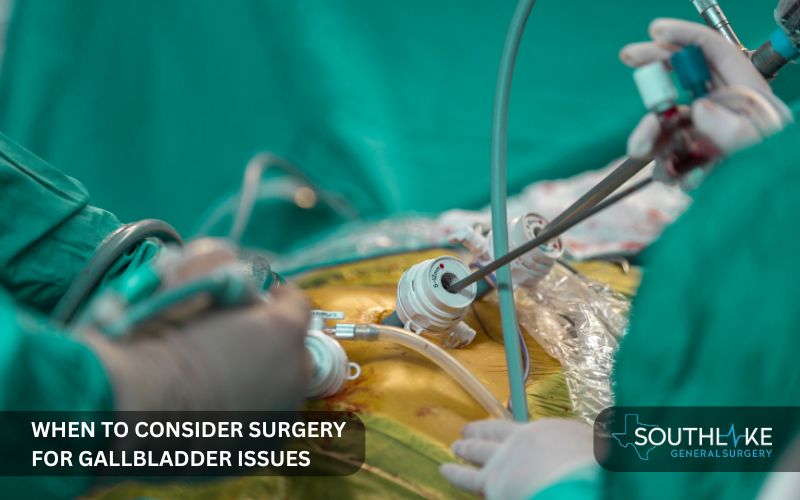
Gallbladder removal surgery is called cholecystectomy. Doctors often suggest this surgery for serious or ongoing gallbladder disease. The common ways to perform this surgery include:
- Laparoscopic
surgery (keyhole surgery):
- Use small cuts to remove the gallbladder.
- Causes less scarring.
- Aids in quicker healing.
- Open
surgery:
- It may be necessary for serious cases, such as inflammation or possible gallbladder cancer.
- Requires larger cuts.
- It takes longer to heal but allows better access for difficult procedures.
Strong signs that show surgery might be necessary are:
- Frequent attacks from the gallbladder.
- A problem with gallstones.
- Bile duct blockages often happen.
Removing the gallbladder won’t affect your normal life. This organ is not essential for living. Talking with your surgeon can help you choose the best procedure and reduce risks.
Post-surgery care and management by Dr. Valeria Simone
Post-surgery recovery after gallbladder removal aims to assist patients in restoring their digestive health. Patients working with Dr. Valeria Simone MD, at Southlake General Surgery receive personalized care plans to aid in their recovery that include:
- Diet tips include eating low-fat foods. This helps patients adjust to life without a gallbladder.
- Support is available for managing daily tasks after laparoscopic cholecystectomy or open surgery.
- Regular check-ups are important. They help monitor any issues after surgery, like minor pain or changes in the bile duct.
Dr. Simone offers personalized care that makes patients feel at ease. She helps them adapt to life without a gallbladder in a kind manner.
By combining her expertise with thoughtful support, Dr. Simone ensures that each patient enjoys a good quality of life. This approach helps them heal faster after surgery.
Lifestyle Modifications and Home Remedies
Home remedies can be helpful for keeping your gallbladder in good shape. You can use them alongside medical treatment. A warm compress on the upper-right part of your stomach might help reduce pain from gallstones or swelling. Easy exercises can increase bile flow and help control your weight.
Natural remedies such as castor oil and teas can assist in alleviating pain. Changing your daily habits may lower the risk of gallbladder problems and improve digestion. This method works best alongside professional care.
The role of exercise in managing gallbladder health
Physical activity helps keep the gallbladder healthy. Here are some key benefits of exercise for gallbladder health:
- Boosts bile production: Working out helps your body make more bile, which is important for digestion.
- Lowers the risk of gallstones: Staying active may lower the chances of developing gallstones.
- Aids in weight loss: Engaging in physical activity may assist in weight loss. This is good for trimming belly fat and preventing gallbladder disease.
Some kinds of exercise can offer you even more benefits:
- Yoga and light aerobic exercises: These can lower inflammation, especially when mixed with Ayurveda practices.
- Recommended activity level: The National Institute of Diabetes and Digestive and Kidney Diseases says to do 150 minutes of activity each week. This can assist in fulfilling energy requirements and avoiding health issues.
It’s important to note that:
- Avoid tough workouts: This is very important while you are healing from gallbladder issues.
- Make your exercise plan just for you: Changing what you do can help prevent gallstones from returning and can also improve your health.
Natural remedies that can alleviate gallbladder pain
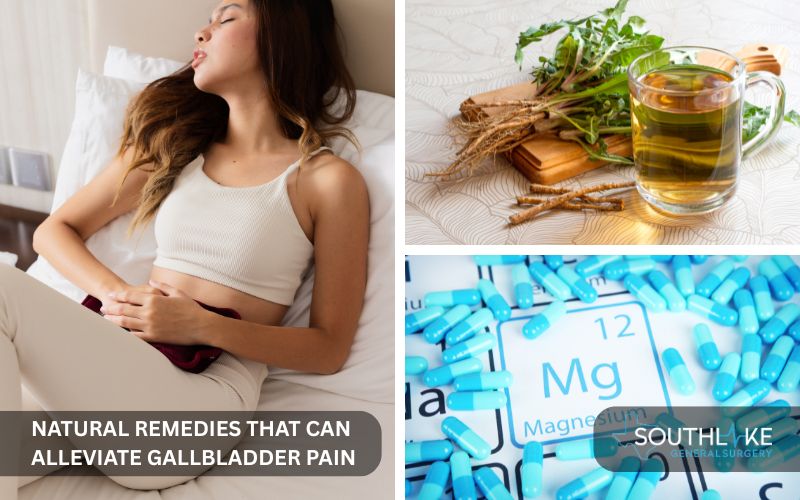
Natural remedies can help alleviate gallbladder symptoms and discomfort. A warm compress on the affected area can relax spasms and reduce bile buildup.
Herbal options such as castor oil and dandelion tea can ease pain from mild gallbladder inflammation. If you are low on magnesium, taking magnesium supplements can also be helpful. They support how bile is processed in the body.
Although these are thought of as different methods to manage pain, research shows it’s best to use them with guidance from a healthcare expert like Dr. Valeria Simone MD. Combining home remedies with proper medical care can help you feel safe and achieve good pain relief.
Conclusion
Taking care of your gallbladder can help reduce pain and improve your overall well-being. To manage gallbladder pain, you need to change your diet and lifestyle.
Eating the right foods can give you relief from gallbladder pain and lower the chances of gallstone disease. If you experience strong symptoms, medical help like laparoscopic cholecystectomy may be necessary to avoid problems from inflammation in the gallbladder.
Talking to healthcare experts provides key information about treatment options for each person’s needs. By maintaining a good balance of healthy eating, exercise, and regular doctor visits, people can manage their symptoms better and live a healthier life.
It’s vital to stay aware and act quickly to improve gallbladder health and the entire digestive system.
Make an Appointment
For relief from gallbladder pain, you might want to see Dr. Valeria Simone, MD, at Southlake General Surgery. If you have a gallbladder attack or gallstone disease, she can help you find good treatment options.
Dr. Simone uses advanced methods, like laparoscopic surgery. This technique can reduce recovery time and improve your general health. Call her today at +1 (817) 748-0200 to talk about your symptoms and explore possible solutions.
Frequently Asked Questions
How quickly can lifestyle changes impact gallbladder pain?
Changing your lifestyle may give you relief from gallbladder pain in a few weeks. Being active and eating healthy foods are good ways to begin. Make a few simple tweaks, and you’ll feel better right away. Keeping habits, like having a low-fat diet and exercising regularly, can help avoid long-term problems. This will also make your digestive system healthier overall.
Can stress aggravate gallbladder pain?
Yes, stress can make gallbladder pain worse. It achieves this by elevating the inflammation levels in your gallbladder. When you feel stressed for a long time, it can impact bile flow and your general health. Using relaxation methods and effectively managing stress can significantly alleviate discomfort associated with the gallbladder.
What indicators suggest that you need to pursue medical help for gallbladder pain?
If you feel severe pain, notice yellowing in your eyes, have a fever, feel chills, or believe you are having a gallbladder attack, it’s important to get medical help right away. If your symptoms suddenly get worse, seek urgent treatment. This can help stop problems like bile duct blockage or make sure that gallstone disease does not get worse.
How does Dr. Simone personalize treatment for gallbladder pain?
Dr. Simone makes care plans for people with gallbladder pain. She uses treatment options that are backed by real evidence. She carefully considers the important details of each patient. This includes their symptoms, how much pain they feel, and their general health. By doing this, she can suggest the best medical or surgical methods. This helps to ensure that patients get good results.
What are the potential long-term complications associated with unresolved gallbladder problems?
Neglecting gallbladder disease can result in significant complications. These problems may include gallbladder cancer, bile duct blockages, or long-lasting infections from gallstones. If not treated, these can be life-threatening. This is why it’s important to get help on time to take care of our general health.
Medically Reviewed By: Dr. Valeria Simone MD
Board-certified General Surgeon at Southlake General Surgery, Texas, USA.
Follow us on Facebook and YouTube.
References:
- Jones, M. W., Small, K., Kashyap, S., & Deppen, J. G. (2023, May 1). Physiology, gallbladder. StatPearls – NCBI Bookshelf. https://www.ncbi.nlm.nih.gov/books/NBK482488/
- Shanmugam, H., Molina, E. M., Di Palo, D. M., Faienza, M. F., Di Ciaula, A., Garruti, G., Wang, D. Q. H., & Portincasa, P. (2020). Physical activity modulating lipid metabolism in gallbladder diseases. Journal of Gastrointestinal and Liver Diseases, 29(1), 99–110. https://doi.org/10.15403/jgld-544
- Metri, K., Patra, S., Ramakrishna, K. K., Salvi, K., Naik, J., & Nagaratna, R. (2021). Management of acute calculus cholecystitis with integrated Ayurveda and Yoga intervention: A case report. Journal of Ayurveda and Integrative Medicine, 12(1), 187–190. https://doi.org/10.1016/j.jaim.2020.12.014
- Chang, C., Chiu, T. H. T., Chang, C., Lin, M., & Lin, C. (2019). Plant-Based diet, cholesterol, and risk of Gallstone Disease: a prospective study. Nutrients, 11(2), 335. https://doi.org/10.3390/nu11020335
- Masudi, T., Capitelli-McMahon, H., & Anwar, S. (2016). Acute pain management in symptomatic cholelithiasis. World Journal of Gastrointestinal Surgery, 8(10), 713. https://doi.org/10.4240/wjgs.v8.i10.713
- Gutt, C., Schläfer, S., & Lammert, F. (2020). The treatment of Gallstone disease. Deutsches Ärzteblatt International. https://doi.org/10.3238/arztebl.2020.0148
- Chen, Q., Zhang, Y., Li, S., Chen, S., Lin, X., Li, C., & Asakawa, T. (2019). Mechanisms underlying the prevention and treatment of cholelithiasis using traditional Chinese medicine. Evidence-based Complementary and Alternative Medicine, 2019, 1–9. https://doi.org/10.1155/2019/2536452
- Anand, A. K., Pilala, P., Balachandra, S. S., Sawant, P. S., Prasad, R., & Rao, B. C. (2019). Managing a case of acute calculous cholecystitis at home: Highlighting the role of family physicians in providing home-based care. Journal of Family Medicine and Primary Care, 8(7), 2548. https://doi.org/10.4103/jfmpc.jfmpc_259_19

